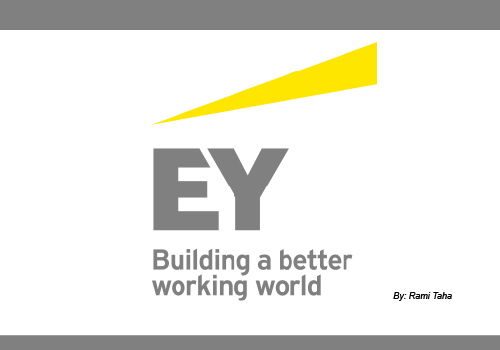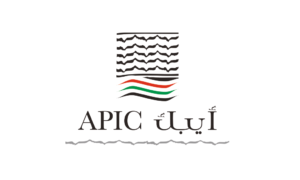Islamic Banking & Finance – An Industry Overview by Ernst & Young (EY)
Through decades of serving business communities across the world, Ernst & Young (EY) has developed industry-based expertise, with rich insights into various sectors including Islamic finance in the Middle East.
With more than 450 Islamic financial institutions operating in 75 countries, total global Islamic assets reached $1.5 trillion in 2012, with more than 15% annual growth for Islamic assets, and a market share of less than 2% of the global banking market. While the prevailing perception is that Islamic banks serve only Muslims, who number 1.7 billion worldwide, facts show that 40% of customers at some Malaysian Islamic banks are non-Muslim. This shows massive potential for Islamic financial services worldwide.
The Islamic finance sector is 50 years old with the first Islamic bank emerging in Egypt in 1963, followed by others across the United Arab Emirates, Kingdom of Saudi Arabia (KSA), Iran, Malaysia and Sudan. The emergence of supervisory bodies that regulate the Islamic finance industry has helped to build and develop a credible, internationally acceptable industry. Dubai Islamic Bank was established under special pioneering laws governing Islamic banking in the Middle East region in 1975. In the same year, the Islamic Development Bank (IDB) was established to foster the economic development and social progress of Muslim communities. In the early 1990s the Accounting and Auditing Organization for Islamic Financial Institutions (AAOIFI) was established and has become a leading standard-setting institution for Islamic financial institutions globally.
The drivers behind this growth in the Islamic finance industry are sustainable in the long term. A rising global Muslim population is a significant contributor to the industry’s growth, with predictions showing that up to 30% of the world’s population could be Muslim by 2025. Booming oil revenues that members of the Gulf Co-operation Countries (GCC) have experienced led to the need for new investment outlets. As a result, in 2011, the market share for Islamic banking in KSA and Kuwait hit around 50% and 33% of total banks’ assets, respectively. Following the financial crisis the world suffered in 2008, there was an increasing tendency to search for alternative, more promising financial and economic systems; this is why Islamic financing has prospered to such an extent. Investors tend to mitigate risks by diversifying their portfolio, so Islamic finance has become one of the more attractive investment opportunities worldwide.
Palestine is a good example of how the sector has grown. During 2009, Islamic banks’ assets in the local market reached $593M, with a total market share of 7.69%. However, Islamic banks’ assets witnessed gradual growth to reach $797M of the $9,662M of total assets owned by all banks in 2012. Customers’ deposits in Islamic banks rose from $482M in 2009 to reach $626M in 2012, while customers’ deposits in all banks increased by $1,279M between 2009 and 2012. In terms of performance, Islamic banks in Palestine have achieved $34M of total revenues, accounting for 7.8% of the total revenues of all banks for the year 2012. Furthermore, net income for Islamic banks in Palestine was $6.5M of a total of $124M achieved by all banks for the year 2012.
Islamic banks yielded a 0.8% return on assets in 2012, compared to 0.23% in 2009. Similarly, return on equity (RoE) jumped from 1.52% in 2009 to reach 5.60% in 2012, still below the average global RoE of 11.6%. This means Islamic banks operating in Palestine have an opportunity to improve their rate of return.
Globally, a variety of common Islamic retail banking products were offered by Islamic banks, such as Murabaha, Ijarah, Musharaka, Istisna’a, Salam, Qard, Tawarruq and Wakala. However, Islamic banks operating in Palestine are offering a narrower range of Islamic retail products that are based on Murabaha and Ijarah. This is an astonishing indicator that there is still hidden potential from which those banks can utilise and benefit.
Similar to conventional banks, Islamic banks face risks associated with credit, liquidity, foreign exchange, and operations. However, Islamic banks have to stay alert and not fall into the trap in Shari’a non-compliance, legal risks, and most importantly, displaced commercial risks that force an Islamic bank to forgo its own share of profit to remain competitive with its conventional peers in the market. Moreover, the Islamic banking industry is facing contemporary issues and challenges that must be carefully managed, such as Shari’a governance, consistent Shari’a rules and quality of assets, in addition to the post-September 11 challenges.
In conclusion, Islamic banks operating in Palestine have great potential to prosper and grow. This is proven by looking at the market share of the Palestinian Islamic banks which is less than 10%, and return on equity which is less than 6% compared to much higher performance indicators across the global Islamic banking industry. Moreover, Islamic banks in Palestine have the option to introduce new products and services onto the market that are provided by Islamic banks in other regions, but not as yet introduced onto the local market.




























